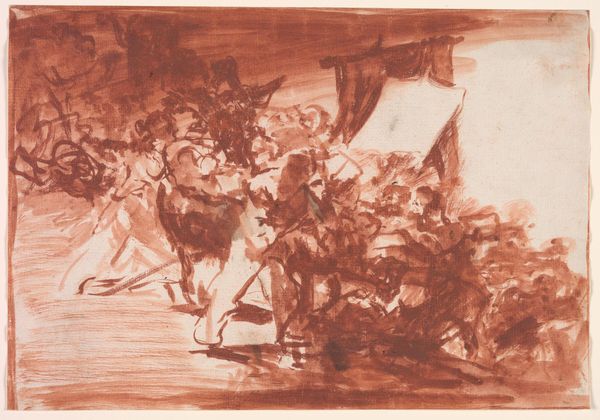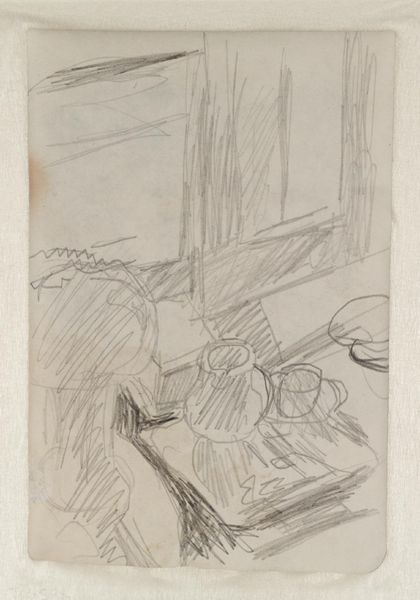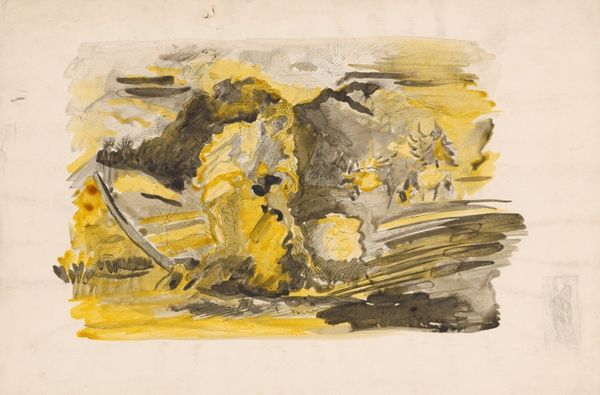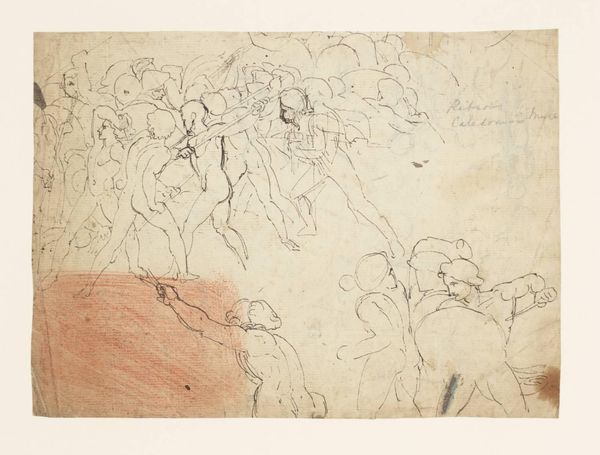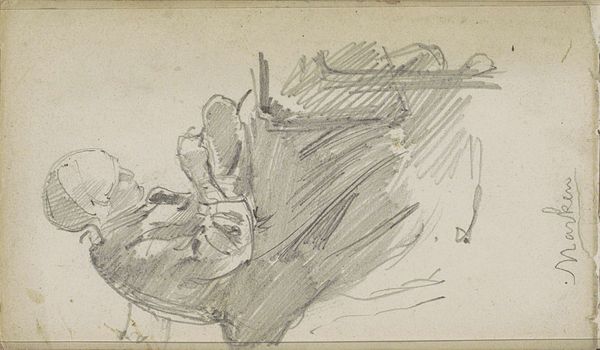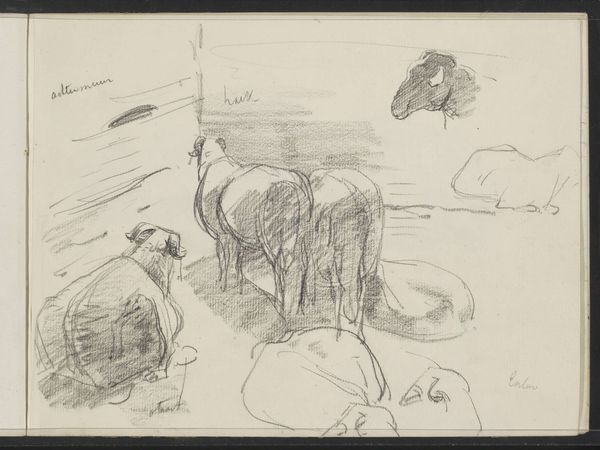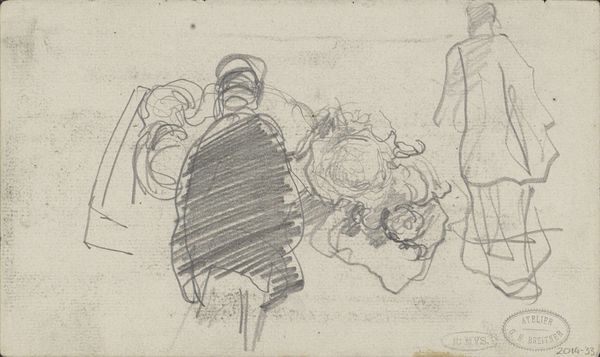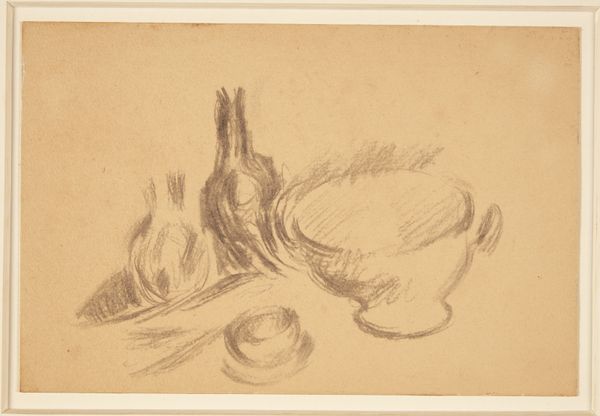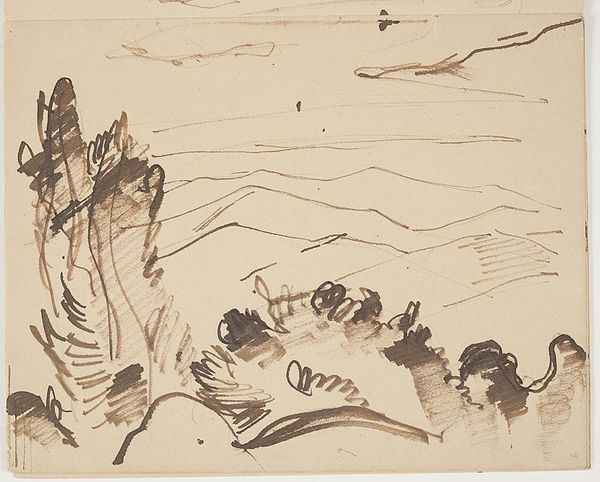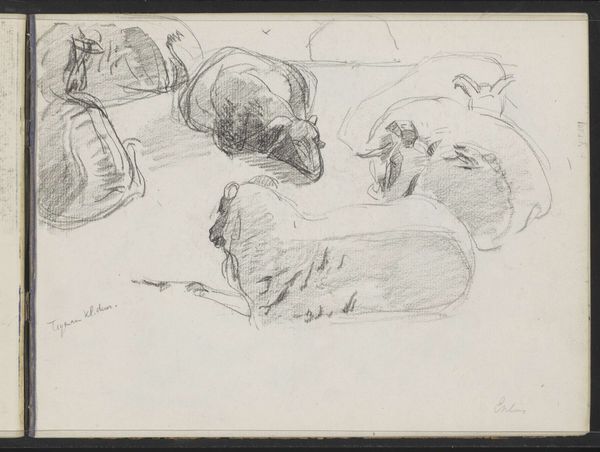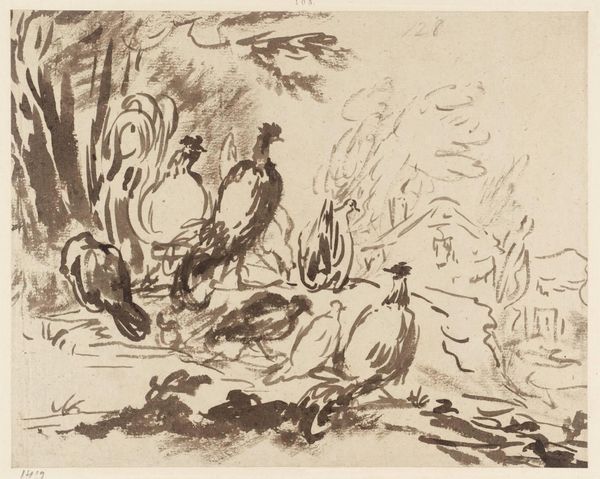
Copyright: Public Domain: Artvee
Curator: Here we have Pierre-Auguste Renoir's "Pêche et Raisins," painted in 1914. The artwork rendered in oil, captures a humble still life. Editor: There's something wonderfully raw about it, isn't there? The brushstrokes are so visible. It's refreshing in its directness. Curator: Renoir was deeply rooted in the Impressionistic tradition, with plein-air practices of the late 19th century. We are observing an artist capturing the transient effects of light and color with immediacy. Still life served as an exploration into painting directly from life. Editor: True, I notice how the symbolism of the fruit adds another layer of depth. Peaches are linked to ideas of character, inner truth, longevity and immortality in traditional folk tales. They create visual representations of hope. Curator: And consider the grapes—long associated with both abundance and celebration, as well as the deeper themes of sacrifice in religious iconography. They are both classical and spiritually nuanced, the simple scene quietly conveying layered themes. Editor: Yes, there is that sense of potential energy about to be consumed. Food often has its symbolic power as a site of human exchange and commerce—of class. Was Renoir playing with this social element by stripping it bare, to a singular expression? Curator: Perhaps he was simplifying, as the Impressionists aimed to represent fleeting, often commonplace moments. Although, by 1914, when the painting was created, it represented the later part of Renoir's career, affected as it was by severe arthritis, but his late paintings often have a particular visual appeal for their bold treatment of familiar subjects. Editor: It certainly makes me consider the artistic and socio-economic context. The later artwork carries that additional complexity. The brushstrokes become these broad emphatic symbols, not simply pretty impressionist colors, no? It is all so deliberately there, on the surface. Curator: It highlights how he returned, time and again, to this theme. A continuous loop exploring form, light, and perhaps something about the temporality of human experience? Editor: Well, I see now why a simple still life might offer much food for thought, so to speak, as it connects social commentary with symbolic representation. Curator: It all coalesces to encourage a more conscious look at a rather routine, domestic and deeply cultivated, scene.
Comments
No comments
Be the first to comment and join the conversation on the ultimate creative platform.
